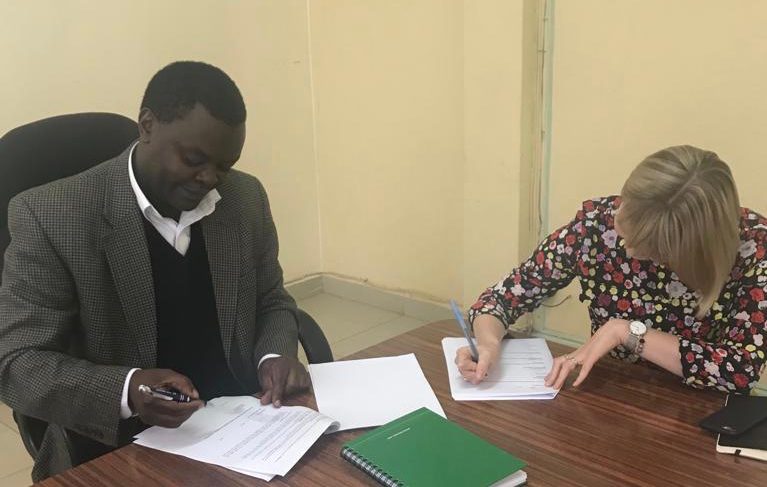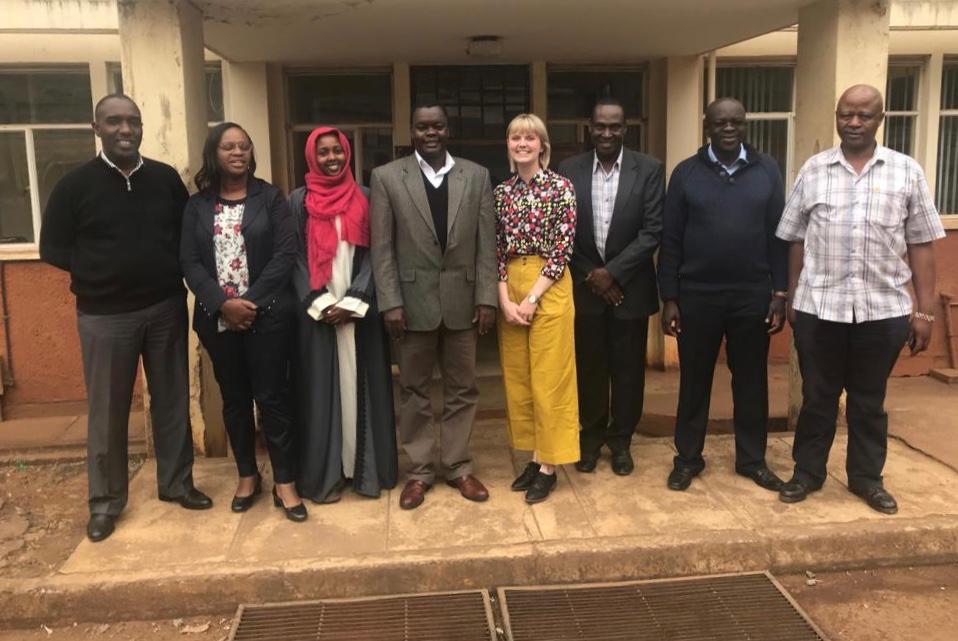To capture the markets of tomorrow in sub-Saharan Africa, the U.S. Grains Council (USGC) is partnering with the Kenyan feed industry today.
As part of these efforts, the Council signed a memorandum of understanding (MOU) this week with the Association of Kenya Feed Manufacturers, known as AKEFEMA, pledging to work together to develop the domestic feed industry there.
“Strong industry associations like AKEFEMA are critical to transforming domestic industries in Africa,” said Katy Wyatt, USGC manager of global strategies, who was present at the signing. “By working with these associations, the Council’s expanded efforts into East and sub-Saharan Africa will work to improve food security in the region through increased feed productivity and additional trade opportunities.
“Thanks to funding from the U.S. Department of Agriculture’s Agricultural Trade Promotion (USDA’s ATP) funding, the Council is expanding its footprint in the region. This work serves the Council’s mission of developing markets, enabling trade and improving lives – and opens new opportunities for trade between the United States and Kenya.”
AKEFEMA represents more than 140 of Kenya’s registered feed manufacturing companies. The association works to build cooperation within the feed and livestock industries and promote improved feed production techniques and enhanced quality insurance. The organization also advocates for national policies and procedures to further strengthen the industry.
Through the new MOU, the Council is committing to support AKEFEMA in this work by prioritizing activities that address the major constraints currently hindering industry growth, including an inconsistent supply of raw materials, feed quality concerns and poor production and management techniques.
In East Africa, the cost of feed can encompass more than 80 percent of total production costs. Corn is the preferred energy source for animal feeds in the region, but domestic supplies are increasingly difficult to source. While Kenya typically produces enough corn domestically to meet between 60 to 70 percent of feed grain demand, regional droughts are causing production shortages, increasing the cost of corn and, in turn, driving up the cost of animal feed. In combination with increasing feed grain demand, more frequent price fluctuations are occurring, which further hampers development of the industry.
Because corn is also a staple crop for human consumption in the region, plenty of supply at reasonable prices is critical to both food security for humans and to meet increasing needs for animal protein.
“These issues will continue to be exacerbated as the population continues to boom in sub-Saharan Africa, creating even more need for imports to meet increased grain demand for both human and animal consumption,” Wyatt said. “More U.S. coarse grains could serve as a viable solution to the high cost of locally-sourced feed ingredients.”
The U.S. Department of Agriculture (USDA) estimates 57 percent of growth in coarse grain imports between 2018 and 2028 will occur in Africa and the Middle East. Unfortunately, Kenya banned genetically modified food and feed imports in 2012, closing the market for U.S. corn exports. However, discussions to lift this ban on corn are ongoing, particularly to address food security concerns.
To address these numerous constraints, the Council and AKEFEMA plan to facilitate technical workshops focused on improving feed formulations and management and promoting alternative feed grain ingredients in animal feeds, supported by funding from the U.S. Department of Agriculture’s Agricultural Trade Promotion (USDA’s ATP) program. The Council is also exploring opportunities for alternative feed grains – like U.S. sorghum and dried distilller’s grains with solubles (DDGS) – to help the Kenyan feed industry meet growing demand as discussions on biotech corn continue.
“The Council’s expansion of programs in Africa with the infusion of ATP funds are aligned with our goal to work where markets do not,” Wyatt said. “Expanded efforts in Africa build upon the Council’s record of successful market development efforts in North Africa with the goal of building new, long-term markets for U.S. feed grains.”
About The U.S. Grains Council
The U.S. Grains Council develops export markets for U.S. barley, corn, sorghum and related products including distiller’s dried grains with solubles (DDGS) and ethanol. With full-time presence in 28 locations, the Council operates programs in more than 50 countries and the European Union. The Council believes exports are vital to global economic development and to U.S. agriculture’s profitability. Detailed information about the Council and its programs is online at www.grains.org.


